Learning
Muskies Engage in Student-Faculty Summer Research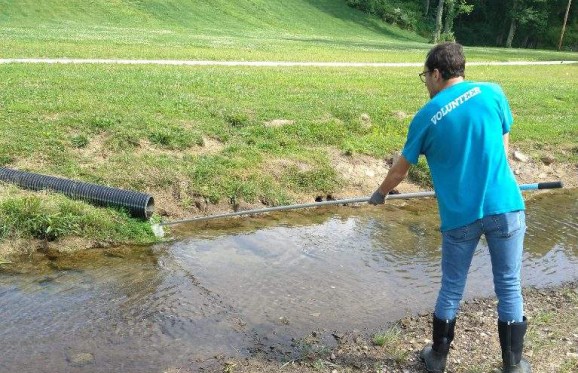
Muskingum University students are gaining hands-on learning and career development experiences through student-faculty summer research projects under the direction of Biology and Chemistry faculty members.
These opportunities are facilitated through selective fellowships which provide a stipend and campus housing, as well as through internships. Four in-depth projects involving eight students are being led by five science division faculty members.
Professor of Biology Amy Santas is leading Hannah Gove ’24 and Taylor Metz ’26 on a multi-part project. She explains that “The central research is studying the effects of a KRAS cancer gene mutation on mitochondrial dynamics, in order to understand the differences between cells with a normal gene (KRAS) that regulates cell division compared to a mutated version of that gene (KRAS with a G12D). This mutated cell is responsible for cancers that are very aggressive and resistant to treatment, and a better understanding of how they behave can help identify cell pathways to target more effective treatments for these cancers.”
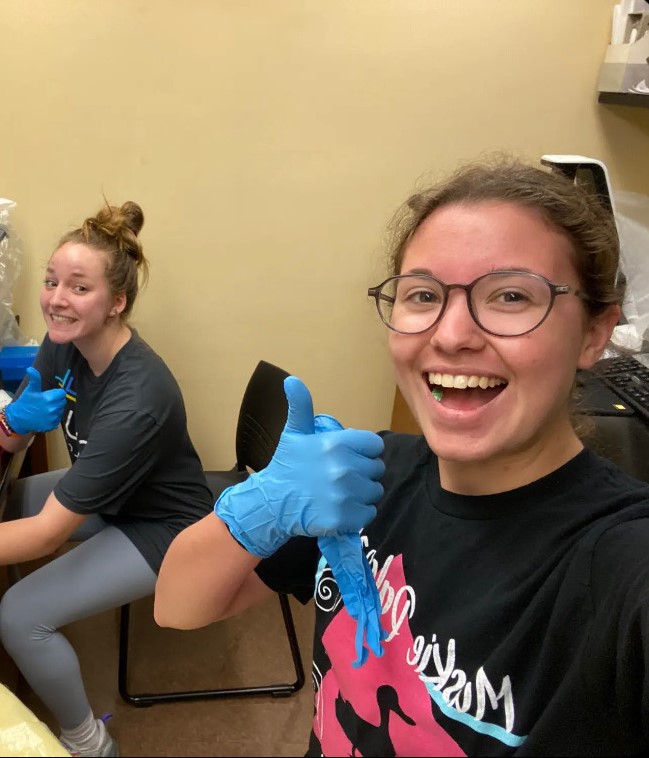
Muskie Research Fellow Taylor plans to double major in biology and chemistry. She notes that “we were able to clearly see the differences between these cell types using fluorescence microscopy, as shown in the photo. The coolest part about the research is that I was able to become involved last October as a first-year student. I have already gained labs skills and professional development which will help me in my future career. The opportunity to be involved in research was one of the driving factors in my choosing Muskingum – this is exactly what I want to do, and I am so thankful to be here.” Taylor will be a mentor in the first-year seminar class this fall and enjoys tutoring about the topics she is passionate about.
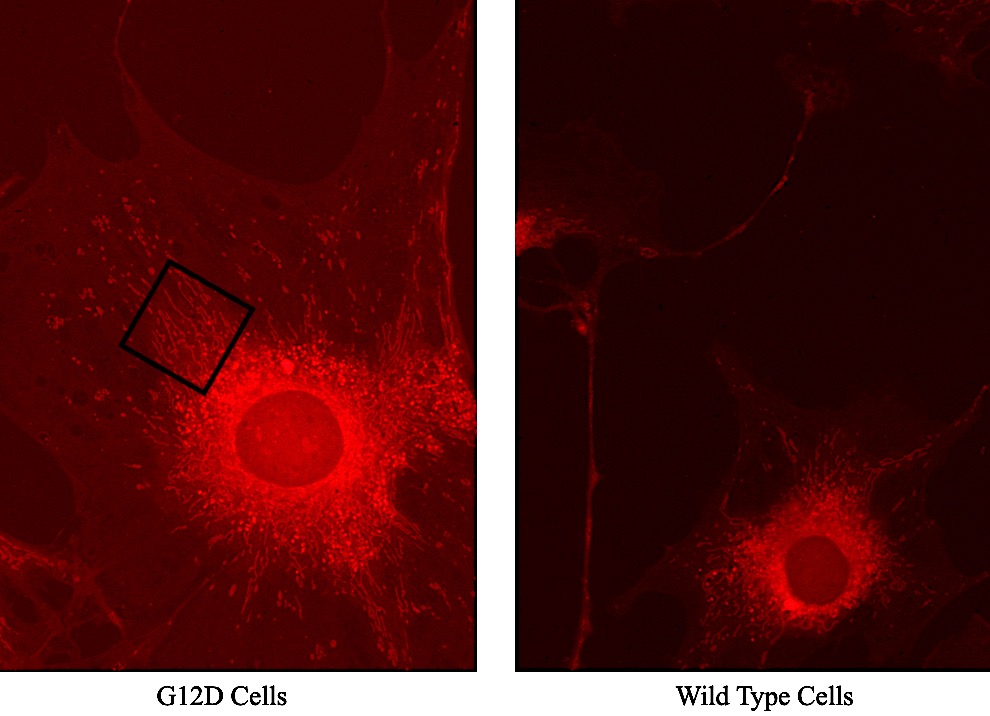
A molecular biology major, Hannah is an intern on the project. “My involvement in the project came from taking a class with Dr. Santas. I’m also curious about the marriage between archeology and molecular biology, which is an up-and-coming field. She connected me with Diane Landers ’74, an archeologist and anthropologist who has been involved with Pennsylvania’s Meadowcroft Rockshelter, one of the oldest prehistoric sites in America. Dr. Santas and I spent a day visiting Meadowcroft, and they invited me to spend a two-week internship with them this August. I will be sifting through the dirt and learning identification and excavation techniques and am hoping to discover ancient DNA – I can’t wait! This has been a fantastic summer and I am so grateful for these opportunities.” Hannah is also a varsity volleyball player.
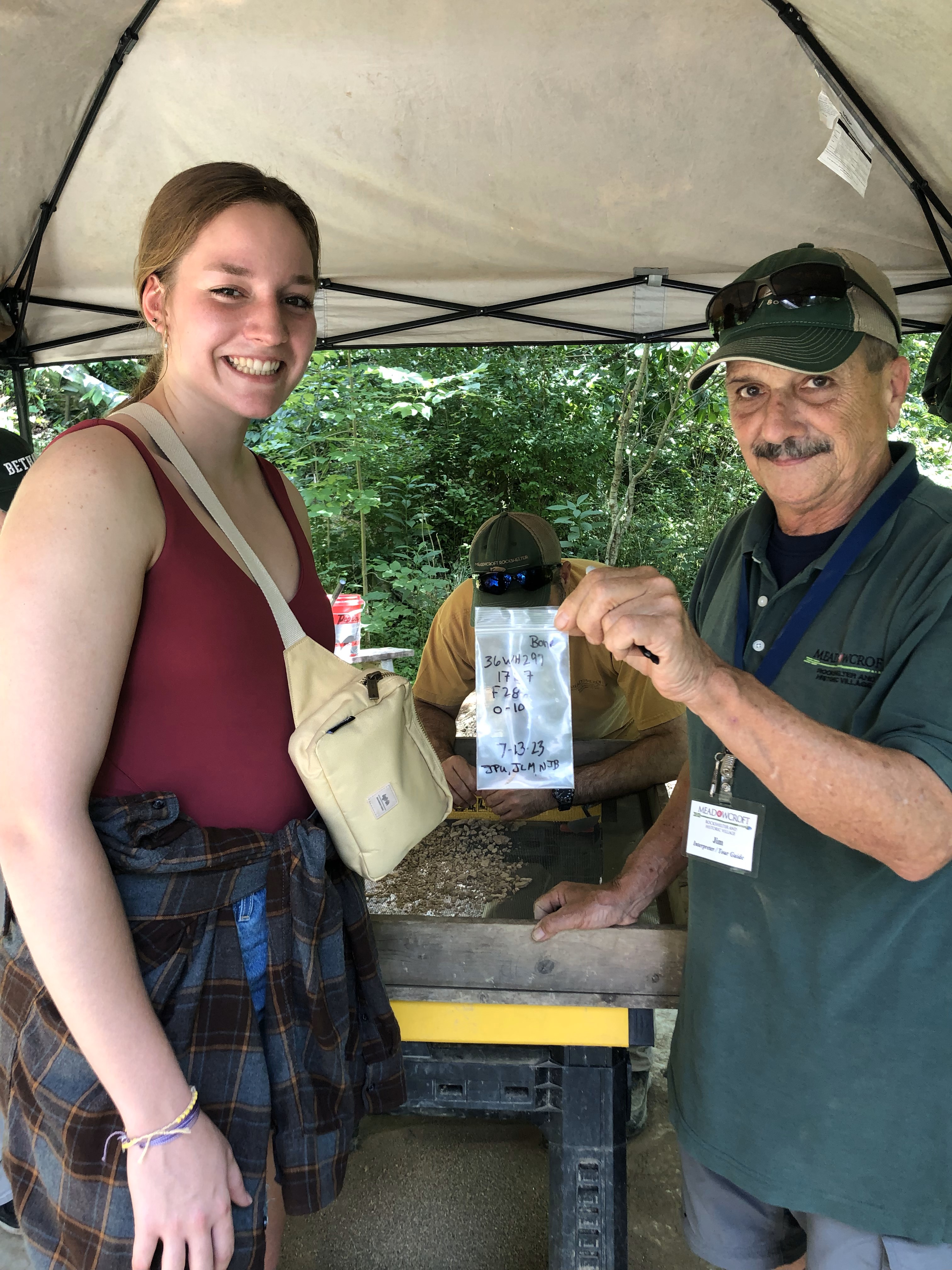
An additional aspect of their KRAS project is to gain better detail by working with an even more high-powered microscope. Partnering with Dr. Giovanna Grandinetti of The Ohio State University, a researcher in the Center for Electron Microscopy and Analysis, they are developing a method to visualize differences in the KRAS cells using fluorescence microscopy and then visualizing the same samples at the ultrastructural level using transmission electron microscopy. Through that work, they helped develop a method to make UV microscopy more affordable and accessible to college and high school students, creating an improvised UV microscope within a compound microscope, which is typically available in student labs. Dr. Santas, Hannah, and Taylor will be traveling to Minneapolis to present a poster outlining this method at the upcoming Microscopy & Microanalysis Meeting.
Professor of Chemistry Lois Zook-Gerdau and her Muskie Fellows have been working for more than a decade with the Muskingum Soil and Water Conservation District (MSWCD) in Zanesville, Ohio.
Muskie Fellow and Environmental Science and Earth Science major Bryce Miskovich ’24 has focused his project on Fertilizer Runoff in the Salt Creek Watershed. “By sampling local farm ground water and testing for pesticide runoff, we can help farmers understand how much of their applications are being absorbed by their plants and how much enters the watershed,” Bryce explains. “After collecting the samples along with MSWCD professionals, I perform the analysis in Muskingum’s chemistry lab.
“I have also had the opportunity to work with MSWCD at their Maple-Harding Community Garden, one of four gardens and a mini-farm that MSWCD uses to provide fresh produce and gardening opportunities to residents in food desert areas and to serve the needs of local food pantries.
“It is great to connect with professionals in my fields of interest. I am absolutely enjoying my fellowship, as well as my overall Muskingum experience.” Bryce said.
James Dooley, Bill and Martha Lovejoy Professor of Biology, and Danny Ingold, Homer A. Anderson Professor of Natural Science, are leading a team of four students in the decade-long Study of Populations of North American Grassland Birds at The Wilds. Their grassland birds research relationship with The Wilds, the largest conservation facility in North America, has been in place since the early 2000s.
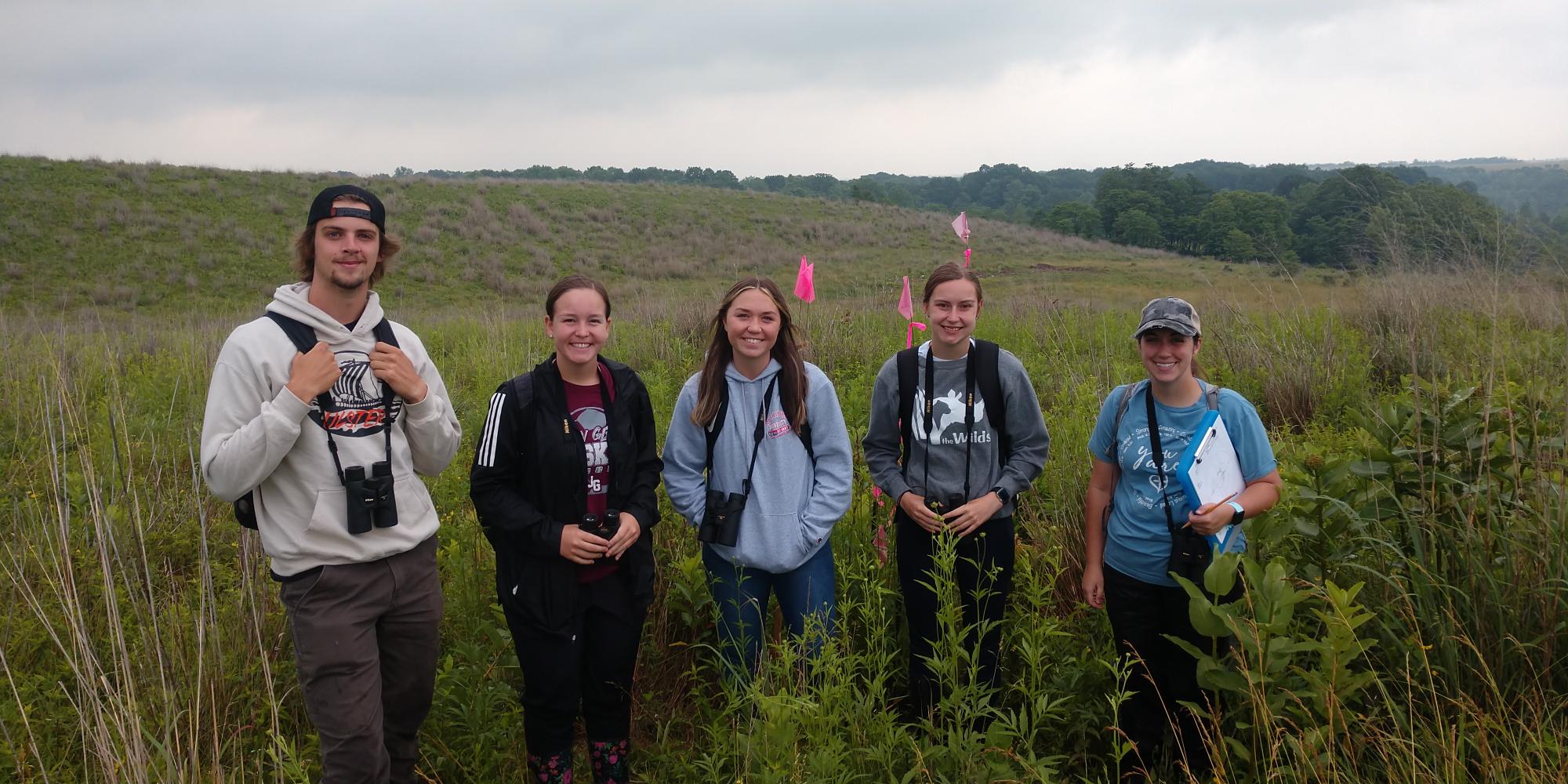 Aiden Gaedcke ’25, Shilynn Williamson ’24, a Wilds Volunteer, Mollie Reeves ’26, and Bailey Miller ’24
Aiden Gaedcke ’25, Shilynn Williamson ’24, a Wilds Volunteer, Mollie Reeves ’26, and Bailey Miller ’24
As Dr. Dooley explains, “The “obligate grassland birds” require open grassland habitat in order to breed and declines in this type of habitat have led to drastic declines in these species across the United States. Through the population study we began in 2013, we are addressing an important area of conversation, and have involved more than 50 students, who have gained first-hand experience with field biology, ecological analysis, and public information dissemination. We now have one of the longest and most powerful ecological studies ever conducted on these species.”
Shilynn Williamson ’24 is a Muskie Fellow majoring in Animal Studies and Biology. “It was fascinating to gather the bird counts and habitat measurements and then to analyze them back in the lab using software developed by the United States Fish and Wildlife Service. We were able to develop absence and presence estimates for the birds and compare them to the prior data to understand how the populations have changed as The Wilds continues to recover from mining. I enjoyed both the field work and data analysis, and the experience is helping me identify career options.”
Conservation Fellow and conservation science major Bailey Miller ’24 is planning a career in wildlife research. “This experience was incredible, especially learning about the grassland birds, and having the chance to see what my hands-on work will be like professionally,” she reflected. “Muskingum is an incredible community to be part of and I’ve had outstanding mentors during my time here. I’m proud to be a legacy Muskie – my brother Blake Miller ’27 is an incoming first-year student this fall, and my mother Amy Bailey Miller ’96 and my uncle David Bailey ’94 are alumni.”
Conservation science major Aiden Gaedcke ’25, is an Anderson Fellow. “I absolutely loved this research experience and working with my fellow students and professors. It was the highlight of my day to visit the point count stations and record the number of birds we could see or identify by song,” he said. “I would do it again if I have the opportunity. It gave me great insight into what I want to do with my career in conservation science.”
Lovejoy Fellow Mollie Reeves ’26 is majoring in Animal Studies and was also part of the Grassland Birds team.
Jamie Rafter, Associate Professor of Biology, led Muskie Fellow and biology major Riley Hudock ’25 in a summer study on the Effects of Circadian Rhythm Disruptions on Chinese Mantid Growth and Development.